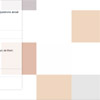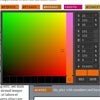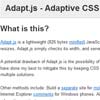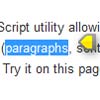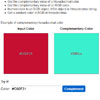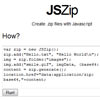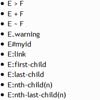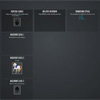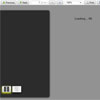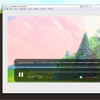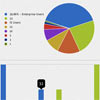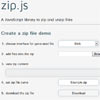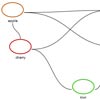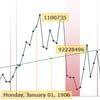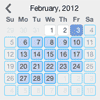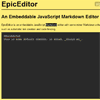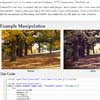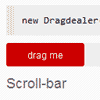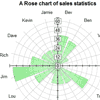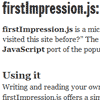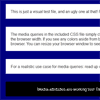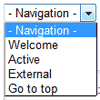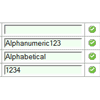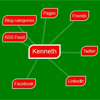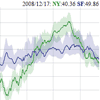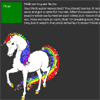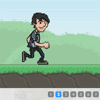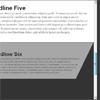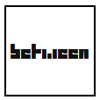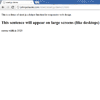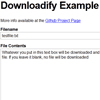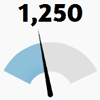scrollama.js
Scrollama is a modern & lightweight JavaScript library for scrollytelling using IntersectionObserver in favor of scroll events.
Important Changes
- Version 2.0.0+:
.onContainerEnterand.onContainerExithave been deprecated in favor of CSS propertyposition: sticky;. How to use position sticky. - Version 1.4.0+: you must manually add the IntersectionObserver polyfill for cross-browser support. See installation for details.
Why?
Scrollytelling can be complicated to implement and difficult to make performant. The goal of this library is to provide a simple interface for creating scroll-driven interactives. Scrollama is focused on performance by using IntersectionObserver to handle element position detection.
Examples
Note: most of these examples use D3 to keep the code concise, but this can be used with any library, or with no library at all.
- Basic - just step triggers
- Progress - incremental step progress callback
- Sticky Graphic (Side by Side) - using CSS
position: sticky;to create a fixed graphic to the side of the text. - Sticky Graphic (Overlay) - using CSS
position: sticky;to create a fixed graphic with fullscreen graphic with text overlayed.
Installation
Note: As of version 1.4.0, the IntersectionObserver polyfill has been removed from the build. You must include it yourself for cross-browser support.
Old school (exposes the scrollama global):
<script src="https://unpkg.com/[email protected]/intersection-observer.js"></script> <script src="https://unpkg.com/scrollama"></script>New school:
npm install scrollama intersection-observer --saveAnd then import/require it:
import 'intersection-observer'; import scrollama from 'scrollama'; // or... const scrollama = require('scrollama');How to use
Basic
You can use this library to simply trigger steps, similar to something like Waypoints. This is useful if you need more control over your interactive, or you don't want to follow the sticky scrollytelling pattern.
You can use any id/class naming conventions you want. The HTML structure should look like:
<!--you don't need the "data-step" attr, but can be useful for storing instructions for JS --> <div class="step" data-step="a"></div> <div class="step" data-step="b"></div> <div class="step" data-step="c"></div>// instantiate the scrollama const scroller = scrollama(); // setup the instance, pass callback functions scroller .setup({ step: '.step' }) .onStepEnter(response => { // { element, index, direction } }) .onStepExit(response => { // { element, index, direction } }); // setup resize event window.addEventListener('resize', scroller.resize);API
scrollama.setup([options])
options:
step(string): Selector (or array of elements) for the step elements that will trigger changes. requiredoffset(number, 0 - 1): How far from the top of the viewport to trigger a step. (default: 0.5)progress(boolean): Whether to fire incremental step progress updates or not. (default: false)threshold(number, 1+): The granularity of the progress interval in pixels (smaller = more granular). (default: 4)order(boolean): Fire previous step triggers if they were jumped. (default: true)once(boolean): Only trigger the step to enter once then remove listener. (default: false)debug(boolean): Whether to show visual debugging tools or not. (default: false)
scrollama.onStepEnter(callback)
Callback that fires when the top or bottom edge of a step element enters the offset threshold.
The argument of the callback is an object: { element: DOMElement, index: number, direction: string }
element: The step element that triggered
index: The index of the step of all steps
direction: 'up' or 'down'
scrollama.onStepExit(callback)
Callback that fires when the top or bottom edge of a step element exits the offset threshold.
The argument of the callback is an object: { element: DOMElement, index: number, direction: string }
element: The step element that triggered
index: The index of the step of all steps
direction: 'up' or 'down'
scrollama.onStepProgress(callback)
Callback that fires the progress (0 - 1) a step has made through the threshold.
The argument of the callback is an object: { element: DOMElement, index: number, progress: number }
element: The step element that triggered
index: The index of the step of all steps
progress: The percent of completion of the step (0 - 1)
scrollama.offsetTrigger([number])
Get or set the offset percentage. Value must be between 0-1.
scrollama.resize()
Tell scrollama to get latest dimensions the browser/DOM. It is best practice to throttle resize in your code, update the DOM elements, then call this function at the end.
scrollama.enable()
Tell scrollama to resume observing for trigger changes. Only necessary to call if you have previously disabled.
scrollama.disable()
Tell scrollama to stop observing for trigger changes.
scrollama.destroy()
Removes all observers and callback functions.
Tips
- Always call
scrollama.resize()after a window resize event to ensure scroll triggers update with new dimensions. - Avoid using
viewport height(vh) in your CSS because scrolling up and down constantly triggers vh to change, which will also trigger a window resize.
Known Issues
The .onStepProgress function does not perform desirably in Safari, returning infrequent updates.
Alternatives
Logo
Logo by the awesome Elaina Natario
License
MIT License
Copyright (c) 2019 Russell Goldenberg
Permission is hereby granted, free of charge, to any person obtaining a copy of this software and associated documentation files (the "Software"), to deal in the Software without restriction, including without limitation the rights to use, copy, modify, merge, publish, distribute, sublicense, and/or sell copies of the Software, and to permit persons to whom the Software is furnished to do so, subject to the following conditions:
The above copyright notice and this permission notice shall be included in all copies or substantial portions of the Software.
THE SOFTWARE IS PROVIDED "AS IS", WITHOUT WARRANTY OF ANY KIND, EXPRESS OR IMPLIED, INCLUDING BUT NOT LIMITED TO THE WARRANTIES OF MERCHANTABILITY, FITNESS FOR A PARTICULAR PURPOSE AND NONINFRINGEMENT. IN NO EVENT SHALL THE AUTHORS OR COPYRIGHT HOLDERS BE LIABLE FOR ANY CLAIM, DAMAGES OR OTHER LIABILITY, WHETHER IN AN ACTION OF CONTRACT, TORT OR OTHERWISE, ARISING FROM, OUT OF OR IN CONNECTION WITH THE SOFTWARE OR THE USE OR OTHER DEALINGS IN THE SOFTWARE.



